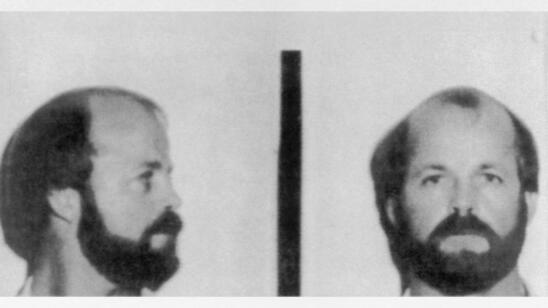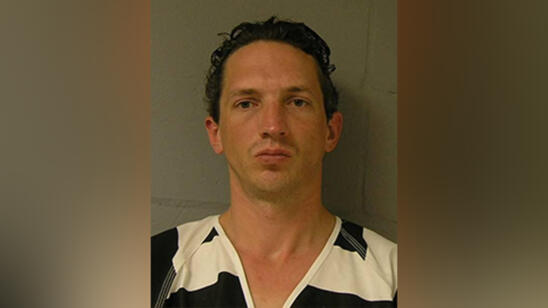Warning: The following contains disturbing descriptions of violent hate crimes. Reader discretion is advised.
Renowned FBI profiler John Douglas has met face-to-face with a Who’s Who of infamous killers, from Charles Manson to “Son of Sam” David Berkowitz. But something about white supremacist shooter Joseph Paul Franklin unnerved the seasoned special agent.
“He had forfeited his right to any claim on earthly mercy,” Douglas writes regarding Franklin’s execution on November 20, 2013, in his latest book, The Killer’s Shadow.
Douglas takes readers inside the hunt for the former Ku Klux Klan member known for his precision aim—the man who shot into a crowd at a synagogue from afar, paralyzed Hustler publisher Larry Flynt (he claimed to be upset over an interracial photoshoot in the magazine), wounded civil rights activist Vernon Jordan, and randomly attacked Black people and biracial couples from 1976 until his arrest in 1980. Authorities say Franklin murdered at least 15 people across 11 states.
Douglas’s insight into the psyche of Franklin, who was abused by his parents as a child, helped authorities locate him on October 28, 1980 and helped legitimize the fledgling science of behavioral profiling.
A&E True Crime spoke with Douglas about how a childhood injury may have pushed Franklin to kill, the murders that marked a turning point in his M.O. and a particularly chilling exchange with the killer.
You’ve interviewed many murderers. What’s different about Joseph Paul Franklin?
He was just so flippant about what he did. His only regret was that he didn’t kill more people. If they needed a volunteer to pull a switch on Franklin, I would have easily done it—with no remorse.
Can you describe the importance of Franklin’s childhood accident where he injured his eye?
His mother took him to the hospital and the physician said, ‘We can save his eye—but bring him back in a month or so for surgery.’ She never did that. And as a result, he became blind in that eye.
One thing he really wanted to be, like [many] other serial offenders, was a police officer. He was shocked and hurt when he heard he could not because of the injury. Because of that, he hated his mother even more. [And as] overcompensation for the loss of the eye, he gets really interested in weaponry and gets to be very good as a shooter.
As a young man, Franklin was fascinated with Adolf Hitler’s Mein Kampf, and joined hate groups like the KKK. In August 1977, he shot and killed an interracial couple at a mall. Why do you call this a turning point in the book?
That was one of the crimes that was not planned. [Franklin] even said it was ‘stupid’ on his part.
He’s in a shopping mall, he sees an interracial couple and there’s some disagreement over a parking space. The driver, who is African American, comes out of the vehicle and approaches [him], Franklin says, ‘with this anger in his eyes.’ But little does this person know that Franklin is [primed to kill], and he kills him. Then he goes up to the passenger side of the vehicle and kills the female. It was a turning point, and he got away with it—[that was] extremely high risk [behavior]. He learned from that to be more patient.
You open the book with Franklin gazing down at B’rith Sholom Kneseth Israel Congregation in St. Louis in October 1977 before he opens fire and fatally hits one member. What did he tell you about it when you interviewed him in the early 1980s?
He was really animated when he was telling us this story…how he saw the synagogue, scoped it out, saw there’s a telephone pole. He needed to rest his rifle because it’s a long shot, so he went to a hardware store and got a 10-inch spike. He nailed it into the telephone pole and wrapped it with a cloth so his weapon could rest there. He’s talking [to us] like he’s hunting a deer.
He didn’t really care who he would shoot. It’s just random shooting because—in his mind—they’re the enemy. He was laughing and joking [to us].
In 1979, Franklin’s second wife gave birth to a daughter in Montgomery, Alabama, but the couple separated a year later. How did you use this background to fathom Franklin’s ‘comfort zone’ and deduce where he might be found when he was on the run?
His weaknesses that I saw were that he got married young and had a child. His only successes up to this point, in his mind, were: killing—he was successful there; he was successful as a bank robber, and his young child.
[A comfort zone] could be a place where the offender lives. Or you look for a time that was the best time in his life. I felt the best time in his life was going to be down in that Alabama area.
Sure enough, the teletype goes out, and the special agent in charge of the mobile office calls me up and says, ‘we spotted him at a blood bank down here.’ [Franklin often raised cash by making blood bank donations.]
In 2001, Franklin wrote a letter to you that touched a nerve. Can you explain why?
He was really angry I made disparaging remarks about wrongful convictions in my book Obsession (concerning false accusations of rape against the Scottsboro Boys in 1931, a case that helped spur the civil rights movement). He wrote ‘How would you like it, John, if your daughter was raped? You’d have a different attitude.’
I can’t really get him out of my mind.
Can you elaborate on what the book means by ‘the shadow cast by Joseph Paul Franklin and his like is long and dark’?
He wanted to create this race war. He wanted to be the model for others to follow in his footsteps. People like Dylann Roof (who killed nine Black parishioners at a South Carolina church in 2015) are pretty much following his same kind of mindset.
Related Features:
How to Talk to Serial Killers: An Interview with ‘Mindhunter’ John Douglas
Edmund Kemper: Why Would a Serial Killer Help the FBI Understand Other Serial Killers?
Was Serial Killer Wayne Williams Really the Atlanta Monster Who Murdered Dozens of Black Kids?


